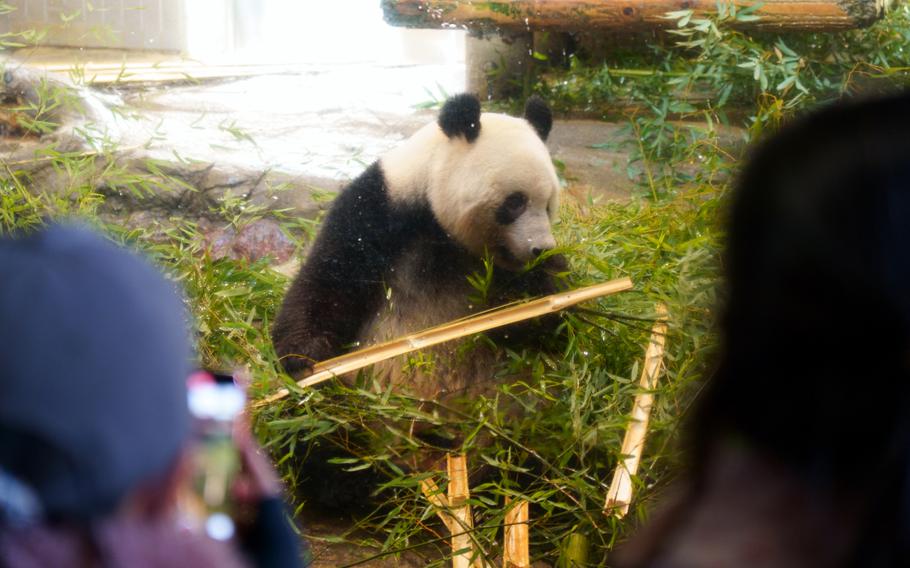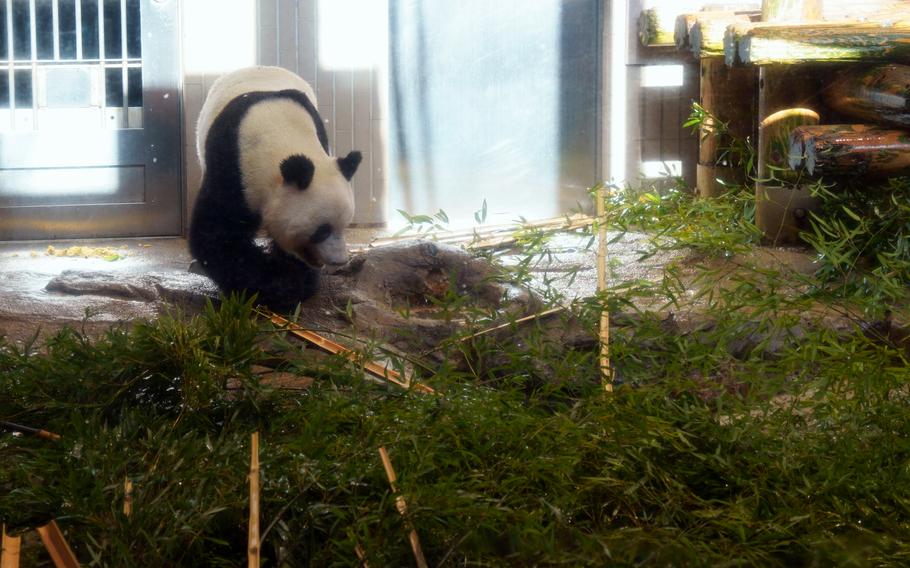Quick Trips
So long, Xiang Xiang: Time is running out to see popular giant panda at Tokyo’s Ueno Zoo
Stars and Stripes January 27, 2023

Xiang Xiang, a 5-year-old giant panda at Ueno Zoological Gardens, will be sent back to China on Feb. 21, 2023, under an agreement between Tokyo and Beijing. (Akifumi Ishikawa/Stars and Stripes)
Visitors have less than a month to get their last glimpse of a popular giant panda at Tokyo’s Ueno Zoological Gardens before she returns to China.
Five-year-old Xiang Xiang will be sent back to China on Feb. 21 under an agreement between Tokyo and Beijing, according to a Tokyo Metropolitan Government news release.
Xiang Xiang was scheduled to return to China in 2019 when she turned 2 years old, according to the agreement. Her stay in Tokyo, however, was extended 18 months due to her popularity, according to Kyodo News on May 23.
The loan was then extended several more times due to the COVID-19 pandemic.
Tokyo Gov. Yuriko Koike announced the return date during a news conference on Dec. 23.
“I think many of you are sad that Xiang Xiang, who was born in Ueno and was loved by everyone for 5 ½ years, will return home to China,” Koike said. “I would ask for everyone’s understanding that it is a return home for Xiang Xiang, who has an important role of promoting preservation and breeding of pandas.”
Visitors rushed to the zoo after the announcement. The line to see Xiang Xiang, last week a two-hour wait, stretched nearly to the zoo’s entrance.

Xiang Xiang, a 5-year-old giant panda at Ueno Zoological Gardens, will be sent back to China on Feb. 21, 2023, under an agreement between Tokyo and Beijing. (Akifumi Ishikawa)
Xiang Xiang is quarantined, so she is kept inside, separated from the four other pandas at the zoo.
The last day to catch a glimpse of Xiang Xiang is Feb. 19, according to the metro government’s news release.
Since many visitors are expected, the metro government, which runs the zoo, decided on an internet lottery for tickets to see Xiang Xiang to limit visitors to about 2,600 per day, excluding junior high-schoolers and younger, according to an announcement on Ueno Zoo’s website.
The lottery is conducted weekly for visiting dates two weeks away, according to the website. The last day to apply for the lottery is Feb. 6.
Visitors can apply online at tokyo-zoo.e-tix.jp/en. A Japanese mobile phone number is required to register.
No lottery application is needed to see the other four pandas.
Ueno Zoo, the first zoo in Japan, opened in 1882, according to its website. It houses about 3,000 animals of about 300 species.
The zoo’s first giant pandas, Kang Kang and Lan Lan, arrived in October 1972 as a gift from China to commemorate the establishment of diplomatic relations between the two countries. Pandas became a huge fad in Japan and over 7 million visitors came annually to see them.
Xiang Xiang was born in June 2017 at Ueno Zoo to mother Shin Shin and father Ri Ri, both on loan from China. The two also had twin pandas Ueno, Lei Lei and Xiao Xiao, in 2021.
The name Xiang Xiang was picked from more than 320,000 names suggested from the public. Its kanji, or Chinese characters, can mean “fragrance,” according the metro government’s website.
She was the first panda cub to be exhibited at Ueno in 29 years, the report said.
On the QT
Location: 9-83 Ueno Park, Taito-ku, Tokyo
Directions: Ueno Park is accessible via several rail and metro lines. It’s a short walk from the JR Ueno Station’s Shinobazu exit and eight minutes from Tokyo Metro’s Ueno Station on the Ginza and Hibiya lines.
Hours: Open 9:30 a.m. to 5 p.m. Tuesday to Sunday; tickets sold until 4 p.m. Closed on Mondays and Tuesdays if Monday is a public holiday.
Prices: 600 yen for ages 16 to 64; 300 yen for ages 65 and older; 200 yen for ages 13 to 15.
Dress: Casual
Information: 03-3828-5171; Online: tokyo-zoo.e-tix.jp/en